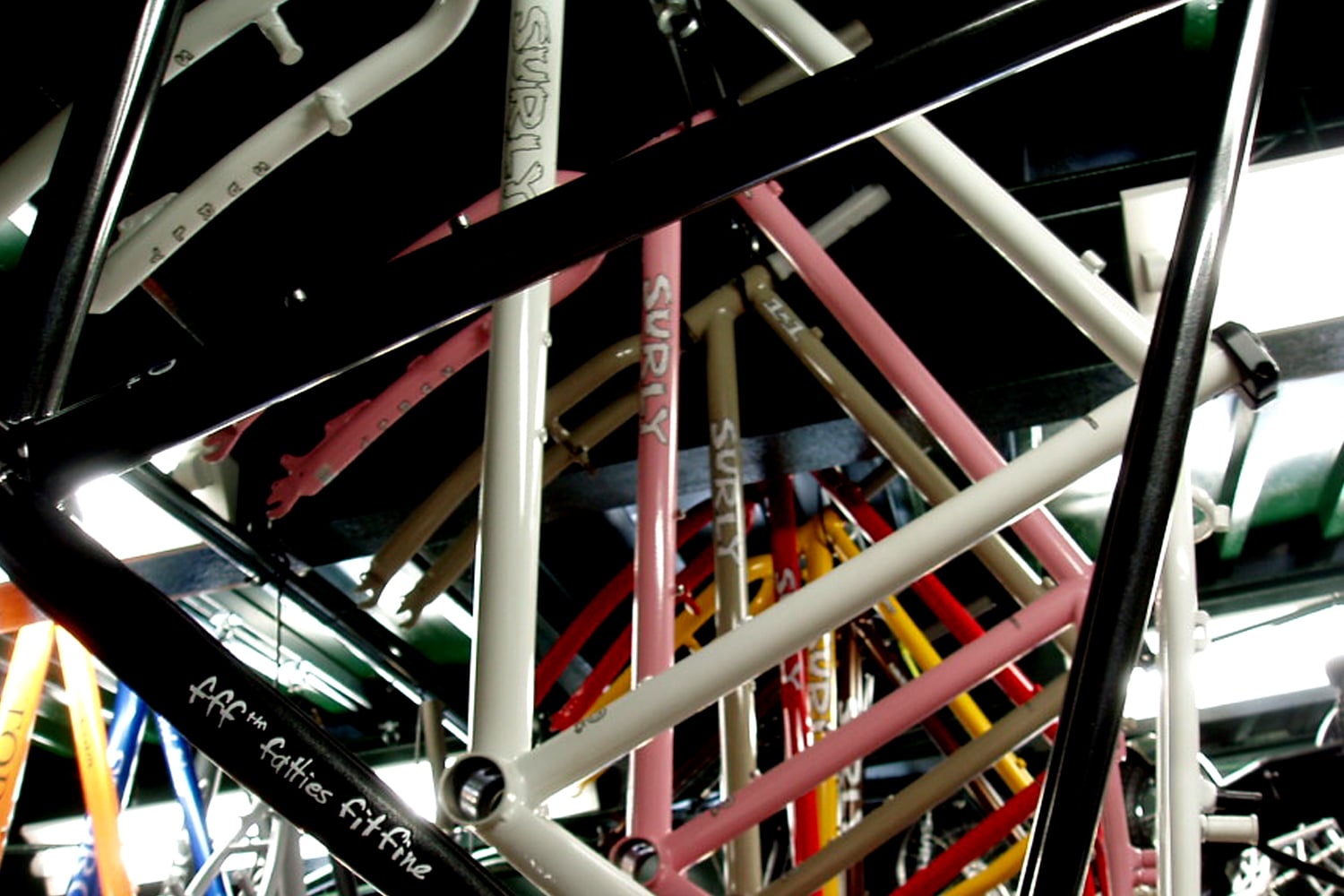Well for f*ck's sake. We thought publishing this piece would help pre-empt some of the emails we'd been getting about putting kickstands on Long Haul Truckers and others of our frames. What happened instead was that it brought a spate of alarmed emails ranging from anger over our anti-kickstand stance (we're anti-kickstand? I don't recall saying that); to people who weren't concerned before, now very concerned about adding or continuing to use a kickstand; to people who had already crushed their chainstays now trying to backpedal their circumstance in order to hold us accountable since we bothered to say anything about it. Cripes. It doesn't pay to try.
The bulk of those correspondences seems to have passed, so we are leaving this post up in the probably futile hope that it helps people understand the technicalities and potential pitfalls of adding a kickstand. We intend it to be educational, not political. You like kickstands? Fine. But read it. THINK about it. If none of this suits you, then our answer must be: Forget it. DON'T use a kickstand unless you know exactly what you're doing. The main body below was first published a few months ago in April or May of 2010. We've made some edits based on questions or concerns people raised, but have left it mostly untouched. Unlike your mom.
**********************************************************************************************
Occasionally we hear from someone who has installed a kickstand on their Long Haul Trucker and crushed the chainstays. This is never a good conversation –for you or us—but almost no one thinks that installing a kickstand is worth asking about beforehand, so most people contact us only after they have just destroyed their frame.
If they had asked us before they installed it we would have led off with the self evident advice that a bike which is lying down can’t fall over. More often than not there is a tree or a building or something that you can lean your bike against if you don’t want to lay it down. But we know there are times a kickstand is a pretty nice thing to have, like when you have a heavy, loaded touring bike. It is inevitable that some people will use kickstands, so in order to avoid the future unpleasantness of The Conversation let’s lay this out clearly here and now:
You can crush the chainstays of the Long Haul Trucker (and our other frames too) if you tighten the kickstand’s clamp bolt too much, or, if you leave it too loose. This is because the chainstay tube walls are not super thick. You can crush them or flex them to death. The LHT chainstays were chosen to optimize the strength-to-weight ratio for the task at hand --hauling gear various distances-- while minimizing unwanted torsional flex in the rear triangle. They are not designed specifically for the clamping forces imposed on them by chainstay-mounted kickstands. Thicker stays could be used, of course, but there would be a performance penalty, and we are not willing to sacrifice ride quality for the sometime-convenience of a kickstand. Since kickstands can safely and effectively be installed without hurting the stays, this is not a great solution. Why don’t we just add one of those kickstand mounting plates under the stays? Because those plates introduce more weld heat to an already sensitive area, meaning we'd likely have to go to thicker walled stays, and we're back to the design-intent and ride quality issue. And anyway they're fugly.
So far we have talked only about kickstands that mount by clamping above and below they chainstays where they meet the bottom bracket. Some people prefer rear mounting kickstands which usually clamp around the non-driveside seat- and chainstays. They won't work, sorry. This type do not work on most Long Haul Truckers because of the placement of the spare spoke holder in conjunction with the shape of our proprietary dropout. Older style dropouts, without the Surly logo, may work with those kickstands.
We recommend the use of two leg kickstands such as the Pletscher. Such a design helps reduce the potential for chainstay flex compared to that which a loaded bike leaning on a kickstand single leg can impose. And because of the extra leg and the placement, they tend to be the most stable in our experience.
The long and short of it is this: Use caution when installing a kickstand on any bike. Use the least amount of force necessary to keep it from moving around or coming loose. Watch what you're doing while you're tightening the bolt. And most imporant of all: check your equipment. Watch what is happening so you can stop if you need to, and check over the clamp, chainstays, and the securing bolt or nut from time to time to make sure everything is copacetic . Some people use cloth bar tape or sections of old thin road tire or rubber tubing between the kickstand plates and the stays. This can help keep the kickstand from wiggling around, reducing the amount of torque necessary to keep it in place. But this isn’t a magic bullet. Check your equipment.
O.K.?
 Surly Bikes
Surly Bikes